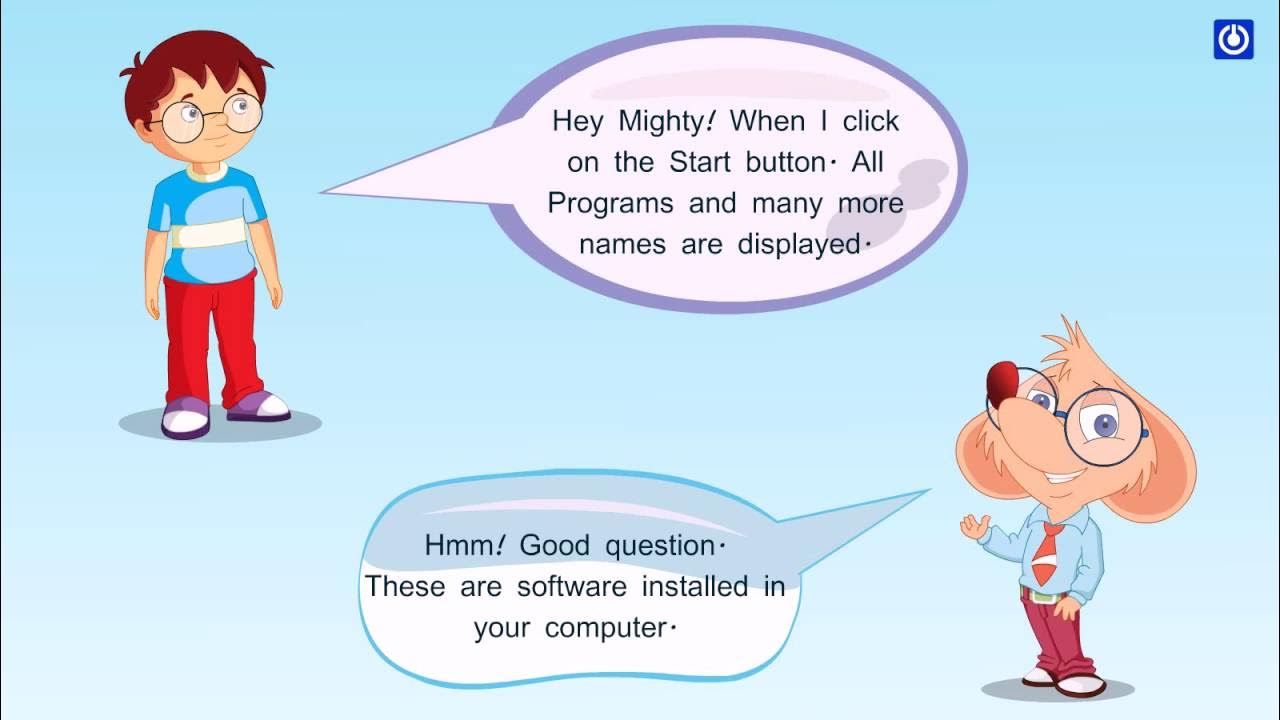SOFTWARE-OS-PENGENALAN KOMPUTER UNTUK PEMULA
Summary
TLDRThis video discusses system software, breaking it into three parts: the operating system (OS), hardware drivers, and application software. It explains how an OS functions as a core layer, handling essential tasks like disk access, memory management, and task scheduling. The video covers popular OS options, including Windows, MS-DOS, Mac OS, Linux, and Unix, highlighting their advantages and drawbacks. Each OS is explained in terms of its history, user-friendliness, security, and compatibility. The video aims to educate viewers about the role and importance of operating systems in computers.
Takeaways
- 💻 The video discusses system software on a computer, focusing on three categories: operating systems (OS), hardware-supporting drivers, and application software.
- 🖥️ The operating system (OS) is the first layer of software loaded into the computer's memory when it is turned on, providing core services such as disk access, memory management, task scheduling, and user interface.
- 🛠️ The OS handles common tasks for other software, meaning applications don't need to manage these tasks themselves.
- 🔑 The core part of an OS that manages these essential functions is called the kernel.
- 🪟 Windows is one of the most popular OS today, first released in 1990 by Microsoft with Windows 3.0, and recent versions include Windows 7, 8, and 10.
- 💡 DOS (Disk Operating System), launched in 1981, is considered the ancestor of modern Microsoft operating systems, using a text-based command interface.
- 🍏 Macintosh (Mac OS) is a proprietary OS developed by Apple, first introduced in 1984, known for its stability, security, and multimedia suitability.
- 🐧 Linux is a Unix-type, open-source OS developed in the 1990s, praised for its modularity and rapid development but challenging for casual users.
- 🔒 Unix is a free OS used primarily in supercomputers and mainframes, valued for its security and use in large-scale data management, though its interface is less user-friendly.
- 🎯 The video concludes with a brief comparison of different operating systems, highlighting their advantages and disadvantages.
Q & A
What are the three main categories of system software on a computer?
-The three main categories of system software are the operating system (OS), driver-supporting hardware, and application software.
What is an operating system, and what does it do?
-An operating system (OS) is the first layer of software placed in memory when the computer is turned on. It performs common core services for other software, such as disk access, memory management, task scheduling, and user interface.
Why is the kernel important in an operating system?
-The kernel is the part of the operating system that performs core and common tasks. It allows other software to perform these tasks without having to implement them individually.
What are some of the advantages and disadvantages of the Windows operating system?
-Advantages of Windows include its user-friendly interface, abundant applications, and ease of installation. Disadvantages are that it is not open source, has a weak security system, can be expensive, and is susceptible to viruses.
What is DOS, and how does it differ from modern operating systems?
-DOS (Disk Operating System) is an early operating system used by IBM and developed by Microsoft. It uses a command prompt interface with text-based commands, unlike modern OSs that have graphical interfaces.
What are some of the advantages and disadvantages of the DOS operating system?
-Advantages of DOS include low memory usage, high compatibility, and a small size. Disadvantages are that it only uses text-based commands and lacks a graphical user interface.
What is Mac OS, and what are its strengths and weaknesses?
-Mac OS is an operating system created specifically for Macintosh computers by Apple. It is stable, has high security, and a multimedia-friendly interface. However, it is relatively expensive, less optimal for gaming, and not open source.
How does Linux differ from other operating systems, and what are its pros and cons?
-Linux is a Unix-type OS with a monolithic kernel and open-source components. Its advantages are being open source, free to use, and rapidly developed by the community. Its disadvantages include a difficult installation process for beginners and limited applications.
What are some of the advantages and disadvantages of the Unix operating system?
-Advantages of Unix include being free, not easily attacked by viruses, and suitable for large-scale data management. Its disadvantages are a lack of many driver options and a less attractive user interface.
What is the primary use of Unix today?
-Unix is widely used in supercomputers and mainframes, particularly in large companies that manage very large datasets.
Outlines

هذا القسم متوفر فقط للمشتركين. يرجى الترقية للوصول إلى هذه الميزة.
قم بالترقية الآنMindmap

هذا القسم متوفر فقط للمشتركين. يرجى الترقية للوصول إلى هذه الميزة.
قم بالترقية الآنKeywords

هذا القسم متوفر فقط للمشتركين. يرجى الترقية للوصول إلى هذه الميزة.
قم بالترقية الآنHighlights

هذا القسم متوفر فقط للمشتركين. يرجى الترقية للوصول إلى هذه الميزة.
قم بالترقية الآنTranscripts

هذا القسم متوفر فقط للمشتركين. يرجى الترقية للوصول إلى هذه الميزة.
قم بالترقية الآنتصفح المزيد من مقاطع الفيديو ذات الصلة
5.0 / 5 (0 votes)






